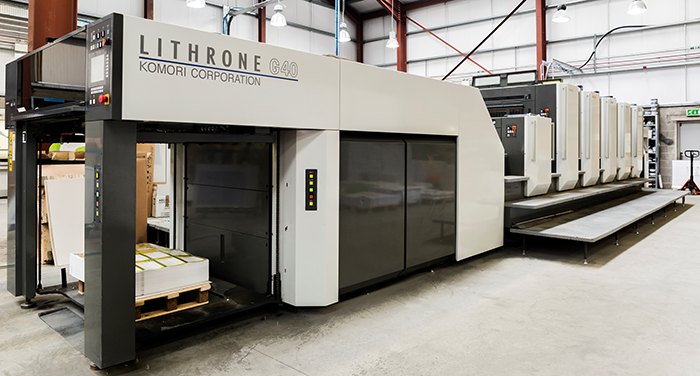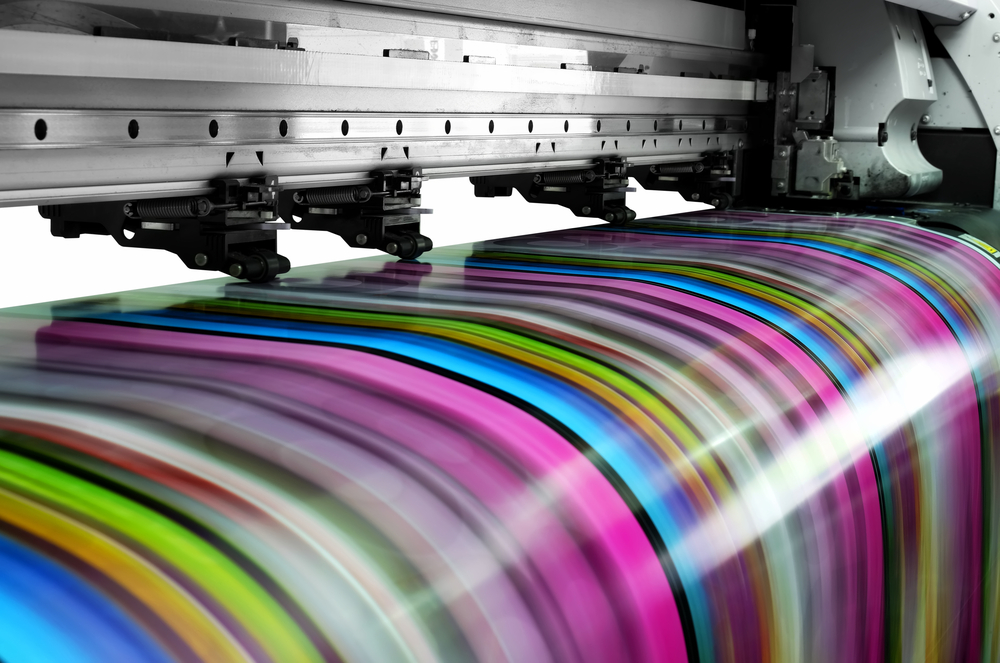Why litho printing Reflects High-Quality Brand Standards
Wiki Article
The Necessary Guide to Recognizing Litho Printing and Its Applications
Litho printing stands as a significant method in the printing sector, rooted in the principles of oil and water repulsion. This method not only supplies top notch images however additionally deals with numerous commercial demands. Its applications vary from advertising and marketing products to packaging, showcasing its convenience. As the industry adapts to new innovations, the development of litho printing questions about its future and importance in a digital landscape. What lies in advance for this sustaining approach?
What Is Litho Printing?
Litho printing, an extensively utilized printing method, counts on the principle of oil and water repulsion. This approach employs a flat printing surface area, usually a metal plate, which is treated to assure that the image areas are responsive to oil-based inks while the non-image locations repel them. The process starts with the production of a picture on home plate, often through drawing or photographic ways. As soon as the image is prepared, the plate is wetted with water, adhered to by the application of ink. The ink sticks only to the image areas, permitting exact recreation of graphics and message. Litho printing is preferred for its capability to create high-grade prints with great information and lively shades. It is frequently utilized in commercial applications, consisting of newspapers, publications, and packaging, showcasing its versatility and effectiveness in meeting the needs of modern printing.The History of Lithography
Lithography is a modern printing staple, its beginnings trace back to the late 18th century when German playwright Alois Senefelder designed the method in 1796. Initially established as a technique for replicating messages and images, lithography utilized a flat rock surface area to develop prints with a chemical process. Senefelder's technology enabled better flexibility and imaginative expression contrasted to previous printing methods.By the 19th century, lithography got prevalent acceptance, becoming a prominent selection amongst musicians and publishers. It made it possible for the mass manufacturing of pictures, maps, and posters, notably affecting the printing sector. The method even more evolved with the intro of lithographic presses, enhancing efficiency and quality.As the commercial revolution advanced, lithography adjusted to fulfill the needs of commercial printing, leading the way for modern-day applications. Today, it stays a necessary technique in different markets, consisting of posting, product packaging, and fine art reproduction.Just How Litho Printing Works
An essential feature of litho printing is its reliance on the concept of oil and water repulsion - litho printing. In this procedure, pictures are moved from a level surface area, normally a steel or polymer plate, to paper. Home plate is treated so that the areas planned for printing bring in ink, while the non-image locations repel it due to their affinity for water. The printing begins by moistening home plate with water, which follows the non-image locations. Subsequently, an oil-based ink is used, sticking just to the designated image areas.When home plate comes right into contact with the substratum, the ink is moved, producing a print. The litho printing process is qualified of creating top notch images with fine information. It is frequently utilized for automation as a result of its effectiveness and consistency, making it a recommended method for industrial printing applicationsAdvantages of Litho Printing
One notable benefit of litho printing is its capacity to produce premium pictures consistently, making it an excellent choice for industrial jobs. This printing method utilizes a flat printing plate, making certain also ink distribution and sharp information. Litho printing is also renowned for its color precision, allowing lively and true-to-life recreations, which is crucial for branding materials.Moreover, it sustains a wide array of substratums, consisting of paper, cardboard, and even specific plastics, boosting its convenience. The procedure is economical for big runs, as economic situations of scale reduce per-unit prices. Additionally, litho printing has a quick turn-around time, permitting reliable production schedules.Its toughness likewise suggests that published products stand up to fading, making sure that the last product preserves its aesthetic allure over time. Generally, these benefits make litho printing a favored choice throughout different sectors, adding to its long-lasting popularity.
Applications of Litho Printing in Service
As businesses increasingly look for reliable and high-grade printing remedies, litho printing becomes a principal in various applications. This strategy is specifically favored for producing advertising and marketing materials such as brochures, leaflets, and brochures, many thanks to its capacity to deliver vibrant colors and sharp images. Additionally, litho printing is regularly employed for product packaging remedies, permitting business to develop eye-catching tags and boxes that improve item appeal.In the market of corporate identification, litho printing contributes in generating expert stationery, calling card, and promotional merchandise, which aid strengthen brand name acknowledgment. In addition, it is widely used in the publishing sector for printed products such as publications and magazines, where constant high quality is vital. Generally, litho printing's adaptability and efficiency make it an important tool for companies aiming to communicate effectively and develop a solid market presence.Artistic Use Litho Printing
Litho printing acts as a flexible medium in the domain name of printmaking, offering musicians a distinct method to reveal their creativity. This method allows for a variety of artistic applications, from typical prints to modern analyses. By checking out the subtleties of litho printing, musicians can harness its distinctive high qualities to improve their job.
Printmaking Strategies Summary
The artistry of printmaking includes a diverse variety of methods, with litho printing standing out for its special strategy to image creation. This technique counts on the principle of oil and water repulsion, allowing artists to attract directly onto a limestone or metal plate with an oily tool. As soon as prepared, home plate is dampened and inked, moving the photo onto paper through stress. Litho printing is celebrated for its capability to generate fine details and abundant tonal variations, making it a preferred option amongst musicians. In addition, the process is versatile, accommodating both conventional methods and modern-day adjustments. This adaptability allows litho printing to bridge different artistic designs, enriching the printmaking landscape with its distinct characteristics and capabilities.Special Artistic Applications
Checking out the distinct creative applications of litho printing reveals its impressive convenience in different creative fields. Artists make use of litho printing to create intricate layouts and appearances, allowing for meaningful and thorough works. The procedure assists in the reproduction of dazzling shades, making it suitable for pictures and great art prints. Many contemporary artists welcome lithography for its capacity to integrate conventional techniques with contemporary principles, causing cutting-edge art work. In addition, litho printing is usually used in the production of restricted version prints, improving their value and charm. The responsive top quality of litho prints includes an unique measurement, drawing in collectors and art lovers alike. On the whole, litho printing continues to be a substantial medium for creative expression, connecting classic approaches with contemporary creative thinking.The Future of Litho Printing in a Digital Globe
As the printing sector develops, litho printing encounters the obstacle of integrating digital modern technologies to remain appropriate. Methods concentrated on digital integration, along with patterns in sustainability and innovation, will shape its future - litho printing. Recognizing these characteristics is important for industry stakeholders looking to adapt to a swiftly transforming landscapeDigital Combination Techniques
A growing variety of litho printing firms are embracing electronic integration approaches to stay affordable in an increasingly electronic landscape. By incorporating digital operations, these companies can improve procedures and boost efficiency. This assimilation allows my response for real-time data monitoring and improved communication in between departments, lowering turnaround times markedly. Furthermore, electronic tools make it possible for far better personalization and customization of published products, accommodating particular consumer demands. Companies are additionally adopting crossbreed printing remedies that incorporate traditional litho methods with electronic innovations, supplying versatility in manufacturing. Leveraging data analytics helps in comprehending market patterns and consumer choices, permitting organizations to make enlightened choices. In general, digital integration is coming to be essential for litho printing firms intending to innovate and reply to developing market demands.Sustainability and Development Trends

Frequently Asked Concerns
What Materials Are Typically Made Use Of in Litho Printing?
The products generally used in litho printing consist of light weight aluminum plates, ink, water, and paper. Each component plays a vital duty in the printing process, ensuring high-quality photo reproduction and efficient transfer of ink onto the substratum.Just How Does Litho Printing Contrast to Digital Printing?
Litho printing offers exceptional shade uniformity and high quality for large runs, while digital printing succeeds in brief runs and modification. Each technique has unique benefits, providing to different requirements based on production scale and cost-efficiency.What Is the Regular Turn-around Time for Litho Printing Projects?
The regular turn-around time for litho printing jobs differs, typically ranging from a few days to numerous weeks. Variables influencing this timeframe consist of task intricacy, amount, and needed completing processes, impacting general manufacturing routines.Can Litho Printing Accommodate Custom Sizes and Formats?
Litho printing can indeed accommodate personalized dimensions and styles, enabling for adaptability in design. This versatility makes it possible for customers to achieve one-of-a-kind print end results customized to their details requirements, boosting the total effectiveness of their jobs.What Are the Environmental Impacts of Litho Printing?
The environmental impacts of litho printing include resource consumption, chemical use, and waste generation. Improvements in sustainable methods that site and environmentally friendly materials are gradually minimizing these dig this adverse results, promoting an extra environmentally responsible method to printing.Report this wiki page